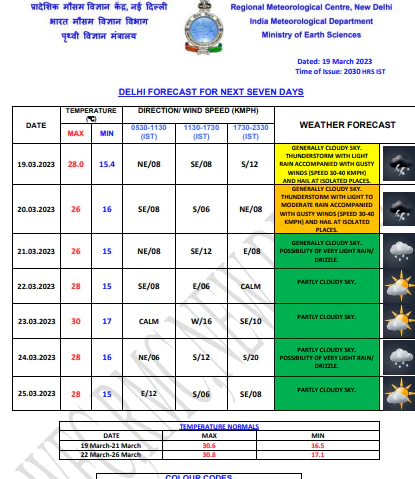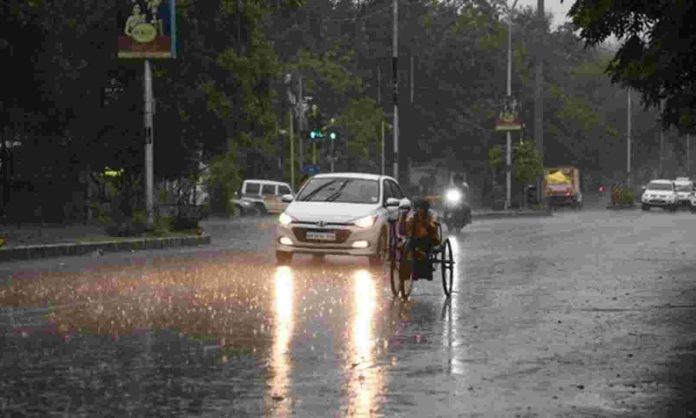IMD Issues Orange Alert : The India Meteorological Department (IMD) reported that the weather station at Safdarjung, considered representative of Delhi, had recorded only 0.8mm of rainfall between 8.30am and 5.30pm. Palam and Ayanagar logged moderate showers and hail, receiving 30.4mm and 39.6mm in the same time period, respectively.
Gurugram recorded 48mm of rain over a 24-hour period till 8.30am on March 19, according to IMD officials in Chandigarh. Although some areas of the city witnessed rain and hail storms in the afternoon and evening, the IMD logged only trace rain after 8.30am. Despite the weather, flight operations at the Indira Gandhi International airport were not impacted.
However, the intensity of rain was expected to increase on March 20, with the IMD issuing an orange alert for the national capital. An orange alert is a warning to authorities to be prepared for any emergency situation that may arise due to weather changes. On the other hand, a yellow alert indicates that the weather may change and people should be vigilant.

IMD scientist Kuldeep Srivastava said that the city could witness gusty winds of up to 40km/hr and hail in some areas, adding that the western disturbance was intensifying, with greater chances of the entire capital being covered by thunderclouds.
A strong WD to impact North India later in the week:
As per current analysis another dedicated period of widespread #rains and #hailstorm in #Punjab #Haryana #Delhi #Rajasthan and West #UttarPradesh during 23-24th March.
This may impact crops on a larger scale.
4/4 pic.twitter.com/PRFIPxU0VG— Weatherman Navdeep Dahiya (@navdeepdahiya55) March 19, 2023
Srivastava said that the western disturbance was combined with an induced cyclonic circulation forming in the region, leading to the formation of thunderclouds. The rain led to Delhi logging a maximum temperature of 28°C – three notches below normal – and a minimum temperature of 15.4°C – one notch below normal.
Several areas in Gurugram witnessed waterlogging for the second day in a row, with Narsinghpur, Pataudi road, and Atul Kataria chowk particularly affected. Waterlogging was also witnessed on the service road of NH-48 near Narsinghpur – a chronic black spot during the monsoons.
A Gurugram Metropolitan Development Authority (GMDA) spokesperson said that heavy rain during this time of year was unexpected, but the civic body had installed pumps to dewater some areas.
The IMD forecasts showed that Delhi was likely to record a maximum of around 26°C on March 20, while the minimum will hover around the 16-degree mark. Delhi may witness drizzle to very light rain on March 21 too, but the peak rain activity during this western disturbance spell is expected on March 20.
In terms of air quality, Delhi’s pollution levels remained in the moderate zone, showing a slight improvement from the Air Quality Index (AQI) reading of 188 on March 18 to 184 on March 19. Forecasts show that AQI is likely to remain moderate over the next two days due to rain and strong winds.

